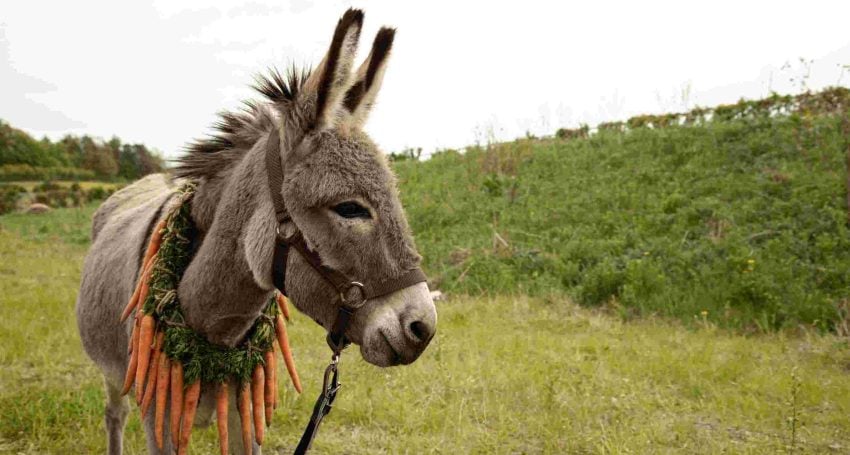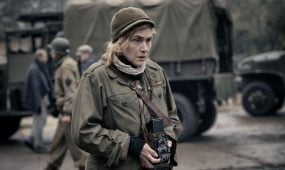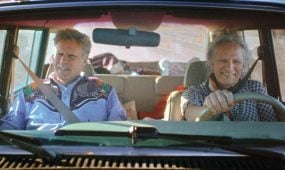EO
Films & TV
“Like Robert Bresson’s Au Hasard Balthazar from which it takes inspiration, EO is bleak in its prognosis on humanity, but it’s hard not to be seduced and mesmerised by Jerzy Skolimowski’s bold directorial style and the narrative’s lean efficiency,” says new anglican focus journalist Ben Rogers

It’s impossible to discuss Jerzy Skolimowski’s latest drama EO without taking a detour into French film history, specifically the 1966 classic Au Hasard Balthazar, from which Skolimowski’s film liberally borrows, tweaks and updates.
Considered one of the best in celebrated French master Robert Bresson’s oeuvre, Au Hasard Balthazar charted a donkey’s journey in rural France as it suffers callous treatment from various human owners. French auteur Jean-Luc Godard declared Balthazar “the world in an hour and a half”, and the film’s reputation as one of history’s greatest remains strong. The film ranked 25 in the recent Sight and Sound critics poll for the 100 greatest films ever made.
Plenty of ink has been spilled on Bresson’s “austere” cinematic style and the “performances” of his actors, which may be better described as “models”, like raw slabs of flesh where any pretenses of traditional actorly technique have been stripped away. However, Bresson’s Christian background is equally important to consider when seriously examining Balthazar.
It’s no coincidence Bresson employed a donkey given the spiritual resonance this animal has with Christians as symbols of peace, service, suffering, humility. The donkey makes an appearance in Numbers 22 in the story of ‘Balaam, the Donkey, and the Angel’, but perhaps is most famously known as the animal upon which Jesus rode into Jerusalem.
While there’s no mistaking the parallels between Jesus’ life and the story of Balthazar’s hardship and endurance, Bresson carefully ensured the film was not merely reduced to simplistic religious allegory. In his unflinching focus on the donkey and its treatment, Bresson compels the audience to look within and recognise the inhumanity and brutality lurking within us all, ready to impose itself on the weakest amongst, be they human or animal. Sure, you can certainly read the donkey as a substitute for Jesus, but it operates just as seamlessly as a broader stand-in for the Christian faith and the travails believers may face in an increasingly secular (and, depending on the location, sometimes openly faith-hostile) world.
Advertisement
Fast forward almost 60 years later and Polish director Jerzy Skolimowski has taken the template laid down by Bresson’s Balthazar and updated it for a more expansive look at modern Europe in EO. A remake in a loose sense, the heavy religious overtones of Bresson’s film have been replaced by a more humanist look at contemporary society, unsurprising given Skolimowski’s publicly expressed concerns and sensitivity towards the plight of animals.
And so we see the titular character taken from a Polish circus that is being confronted by animal rights activists, then on to a farm before making its way across Poland and finding a home as a local football mascot, then onto an animal hospital, a fur factory, a priest’s home and finally a slaughterhouse. Along the way, the donkey encounters humanity’s compassion, indifference and cruelty.
Using Bresson’s classic as inspiration is a risky gambit for Skolimowski given the towering reputation Bresson and Balthazar have, but it’s one that appears to have paid dividends — EO nabbed the jury prize at Cannes last year, received strong critical praise and was nominated for an international Oscar. Like Balthazar, EO is bleak in its prognosis on humanity, but it’s hard not to be impressed by Skolimowski’s bold directorial style and the narrative’s lean efficiency — the film clocks in at around 85 minutes. Nobody would declare it surpasses its predecessor, but it’s still essential viewing from one of Europe’s leading filmmakers.
Advertisement
Skolimowski’s aesthetic vision in EO is a world away from Bresson. Where the latter employed his trademark “no visual fireworks” camerawork and precise slow editing rhythms, Skolimowski deploys a wide range of dazzling shots and compositions, as well as an aural feast of sounds and music. We get subjective donkey points of view, a glorious night sequence in a forest riddled with hunters’ laser lights, a drone sequence awash in a blood red filter as it flies through a forest and windfarm and jumpy handheld camerawork that directly embeds you in smalltown European football culture. Despite his own fairly wild filmography including The Shout, Deep End, Hands Up!, Barrier and Essential Killing, you could say that this is Skolimowski at his most radical and experimental.
The other rather marvelous achievement EO manages is to get audiences to truly empathise and identify with its non-human protagonist for an hour-and-a-half in a way that evokes “feeling”, not just understanding, as an appeal to the heart and mind. A donkey may not be the most expressive of animals to allow us to imprint human psychology onto, but the six animals performing as the titular “star” draw you in to the point where you’re fully invested in EO’s struggles, the pain of lost love and the triumph of overcoming a human oppressor.
French icon Isabelle Huppert appears briefly in the final third as a European countess whose stepson, a young priest, encounters EO on his way home and befriends the animal, even admitting to it that he’s eaten donkey meat. Huppert’s is the only major face in the entire film, and given we’ve come to normalise a donkey as our star lead, her sudden appearance is a little jarring, a shock to our sensibilities that this is a European arthouse film after all and not a documentary-like descent into anthropological filmmaking you might think Lucien Castaing-Taylor and Verena Paravel would attempt. Huppert’s countess doesn’t really add to much, and a cynic may conclude it was a shrewd marketing decision to include her in the cast so an established European arthouse brand could have some movie poster billing. Nevertheless, that it’s a priest that meets the donkey will no doubt prompt some audience members to consider what Skolimowski is saying about Christianity and his confession to the animal about tasting its flesh.
For contemporary audiences a film like Balthazar may come across as suffocating in its religious symbolism and tone, but I strongly encourage people to view both Bresson’s film and EO to reflect on the ways both present the Christian faith onscreen, while considering how Skolimowski embeds Christianity into a wider tapestry of concerns around technology, the environment, the treatment of animals, social integration and politics’ limitations.
Bresson chose a very specific ending for his donkey, which had unmistakeable links to Christ’s death. However, Skolimowski chooses to close his film with a mass-production and over-consumption message that seems to say more about the plight of animals (including us humans) than the faith itself. At 84, this might be Skolimowski’s last film, and if it does turn out to be his final word on humanity, EO completes an esteemed career with a radical, artistically-rich plea to rethink the foundations of our unstable modern world.
EO, rated MA15+, and directed by Jerzy Skolimowski, is currently showing in cinemas.





